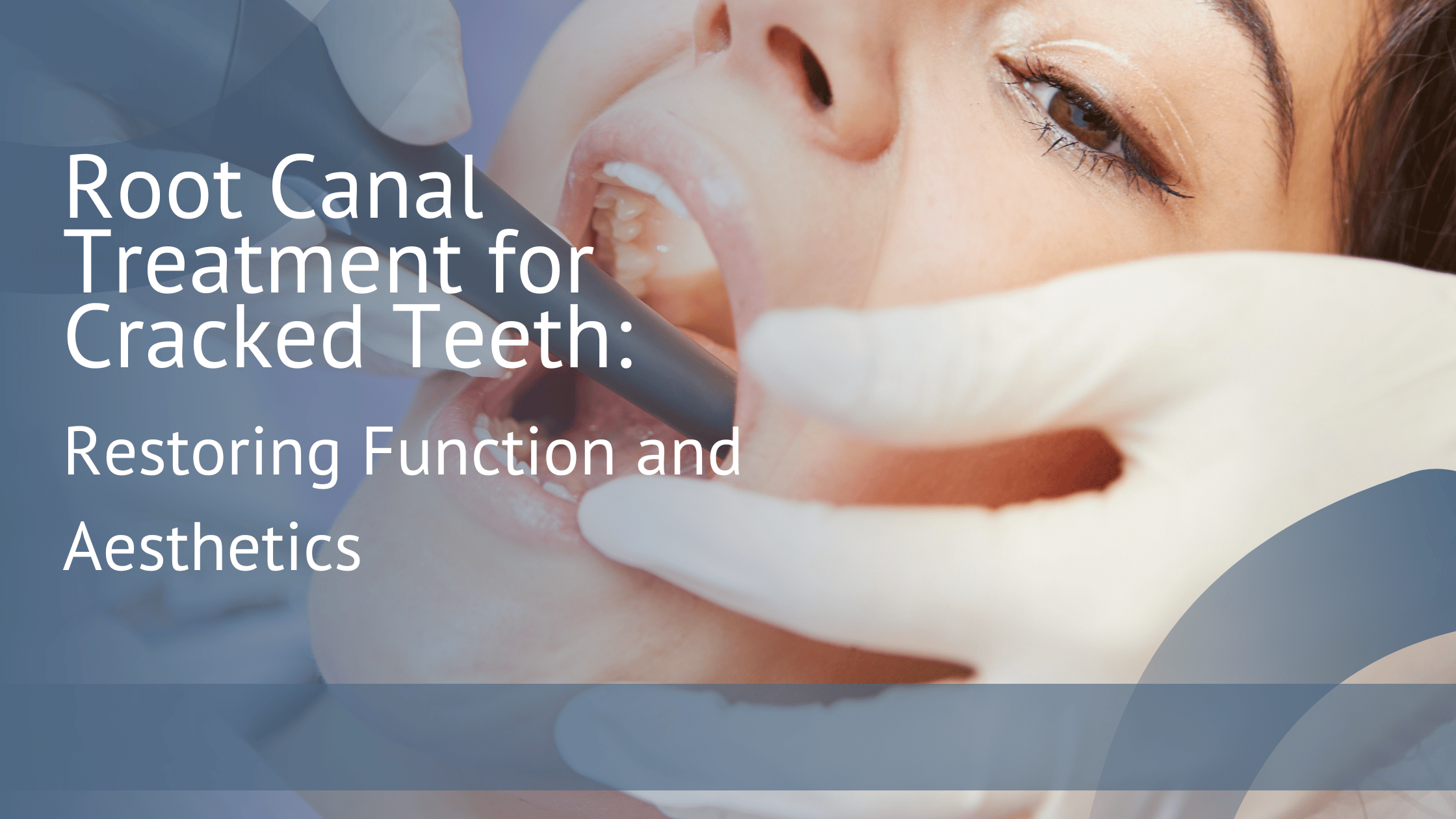Cracked teeth can be a source of discomfort and concern, affecting both our ability to chew and our confidence in our smile. Fortunately, root canal treatment offers an effective solution to address this issue, providing restoration for cracked teeth while improving their function and aesthetics. We’ll explore the ins and outs of root canal treatment, explaining the procedure, highlighting its benefits, and addressing some common questions related to cracked teeth.
Understanding a Cracked Tooth
Cracked teeth occur when there is a fracture in the tooth structure. These cracks can vary in severity, ranging from minor surface cracks to more extensive fractures that extend deep into the tooth. Cracked teeth can result from various factors, such as trauma, biting on hard objects, teeth grinding, or even natural wear and tear.
Causes of Cracked Teeth
Several factors can contribute to the development of cracked teeth. These include:
- Biting or chewing on hard objects like ice or hard candy.
- Teeth grinding or clenching, known as bruxism.
- Trauma to the face or mouth due to accidents or injuries.
- Natural wear and tear over time, especially in older adults.
- Large fillings that weaken the tooth structure.
- Sudden temperature changes in the mouth, such as consuming hot food followed by cold beverages.
Signs and Symptoms
Recognizing the signs and symptoms of cracked teeth is crucial for timely intervention. Some common indicators of cracked teeth include:
- Sensitivity to hot or cold temperatures.
- Pain or discomfort when biting or chewing.
- Sharp pain when releasing the bite.
- Inconsistent pain that comes and goes.
- Swelling of the gums around the affected tooth.
- Discoloration or darkening of the tooth.
Importance of Prompt Treatment
Seeking prompt treatment for cracked teeth is essential to prevent further damage and potential tooth loss. If left untreated, cracks can deepen and extend into the tooth’s root, leading to infection, abscesses, and the need for more invasive procedures such as tooth extraction.
Introduction to Root Canal Treatment
Root canal treatment, also known as endodontic treatment, is a procedure aimed at saving cracked or infected teeth by removing the damaged pulp from within the tooth. This treatment involves cleaning, disinfecting, and sealing the tooth to prevent future infection and restore its function.
How Does Root Canal Treatment Work?
During root canal treatment, the dentist or endodontist follows a step-by-step procedure to restore the cracked tooth. The steps involved are:
- Anesthesia: The area around the affected tooth is numbed using a local anesthetic to ensure a pain-free procedure.
- Access Opening: The dentist creates a small access hole in the tooth, allowing access to the pulp chamber and root canals.
- Pulp Removal: The damaged or infected pulp is carefully removed from the tooth using specialized instruments.
- Cleaning and Shaping: The dentist cleans and shapes the root canals, ensuring the removal of any infected tissue or bacteria.
- Filling: The cleaned root canals are filled with a biocompatible material called gutta-percha, which seals the canals to prevent reinfection.
- Restoration: A dental crown or filling is placed on the treated tooth to restore its strength, function, and aesthetics.
Step-by-Step Procedure
The step-by-step root canal procedure can be summarized as follows:
- Anesthesia to ensure a pain-free experience.
- Access opening to reach the tooth’s pulp chamber and root canals.
- Pulp removal to eliminate damaged or infected tissue.
- Cleaning and shaping of the root canals for thorough disinfection.
- Filling the canals with gutta-percha to seal and protect against reinfection.
- Restoration of the tooth with a dental crown or filling.
Benefits of Root Canal Treatment
Root canal treatment offers several benefits for individuals with cracked teeth, including:
- Pain Relief: Root canal treatment alleviates the pain and discomfort associated with cracked teeth.
- Tooth Preservation: It helps save cracked teeth from extraction, preserving the natural tooth structure.
- Improved Function: By restoring the tooth’s integrity, root canal treatment allows for normal chewing and biting.
- Enhanced Aesthetics: Dental crowns used in root canal treatment improve the appearance of the cracked tooth, blending seamlessly with the surrounding teeth.
- Long-Term Solution: When performed correctly and with proper aftercare, root canal treatment can provide a long-term solution, eliminating the need for further intervention.
Post-Treatment Care and Recovery
After undergoing root canal treatment, it is crucial to follow proper post-treatment care guidelines to ensure a smooth recovery. Some key points to remember include:
- Avoid chewing on hard or sticky foods immediately after the procedure.
- Maintain good oral hygiene practices, including regular brushing and flossing.
- Attend follow-up appointments with your dentist for monitoring and any necessary adjustments.
- Inform your dentist if you experience persistent pain, swelling, or any other concerning symptoms.
Myths and Misconceptions about Root Canal Treatment
Root canal treatment has often been associated with myths and misconceptions that may cause anxiety or hesitation. Let’s debunk some of the most common misconceptions:
- Myth: Root canal treatment is extremely painful.
- Fact: With modern techniques and anesthesia, root canal treatment is no more uncomfortable than getting a regular dental filling.
- Myth: Cracked teeth always need to be extracted.
- Fact: Root canal treatment can often save cracked teeth, avoiding the need for extraction.
- Myth: Root canal treatment causes illness or systemic health issues.
- Fact: There is no scientific evidence linking root canal treatment to systemic health problems.
Conclusion
Root canal treatment is a highly effective solution for addressing cracked teeth, providing both functional and aesthetic benefits. By understanding the causes, symptoms, and importance of prompt treatment, individuals can make informed decisions regarding their dental health. With proper care and regular dental visits, individuals can restore their cracked teeth, regain their smile’s confidence, and enjoy the ability to chew and bite without discomfort or pain.





Leave A Comment